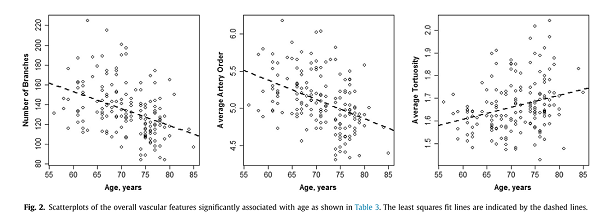Quantitative Assessment of the Intracranial Vasculature in an Older Adult Population using iCafe (intraCranial Artery Feature Extraction)
Li Chen a, Jie Sun b, Daniel S. Hippe b, Niranjan Balu b, Quan Yuan c, Isabelle Yuan d, Xihai Zhao e, Rui Li e,LeHe e, Thomas S. Hatsukami f, Jenq-Neng Hwang a, Chun Yuan b,*
a Department of Electrical Engineering, University of Washington, Seattle, WA, USA
b Department of Radiology, University ofWashington, Seattle, WA, USA
c Department of Neurology, Xuanwu hospital, Capital Medical University, Beijing, China
d Wellesley College, Wellesley, MA, USA
e Biomedical Engineering, Tsinghua University, Beijing, China
f Department of Surgery, University ofWashington, Seattle, WA, USA
Abstract
Comprehensive quantification of intracranial artery features may help us assess and understand varia- tions of blood supply during brain development and aging. We analyzed vasculature features of 163 participants (age 56e85 years, mean of 71) from a community study to investigate if any of the features varied with age. Three-dimensional time-of-flight magnetic resonance angiography images of these participants were processed in IntraCranial artery feature extraction technique (a recently developed technique to obtain quantitative features of arteries) to divide intracranial vasculatures into anatomical segments and generate 8 morphometry and intensity features for each segment. Overall, increase in age was found negatively associated with number of branches and average order of intracranial arteries while positively associated with tortuosity, which remained after adjusting for cardiovascular risk fac- tors. The associations with number of branches and average order were consistently found between 3 main intracranial artery regions, whereas the association with tortuosity appeared to be present only in middle cerebral artery/distal arteries. The combination of time-of-flight magnetic resonance angiography and IntraCranial artery feature extraction technique may provide an effective way to study vascular conditions and changes in the aging brain.
Published on Neurobiology of Aging (IF:4.454)
DOI: 10.1016/j.neurobiolaging.2019.02.027
https://www.sciencedirect.com/science/article/abs/pii/S0197458019300776
